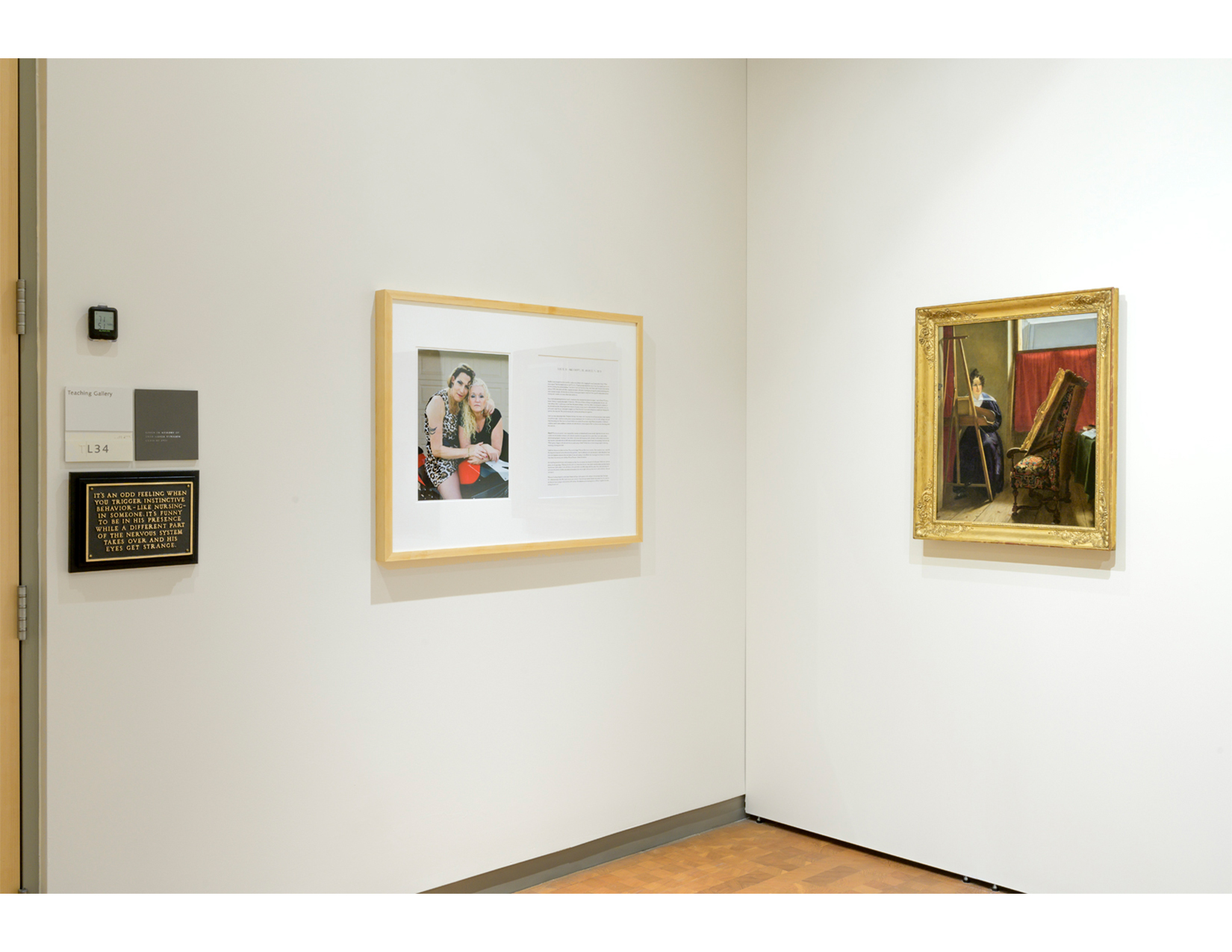
About That Narrative: Jess Dugan and Vanessa Fabbre
Indigo Casais '23 is a STRIDE scholar working with curator Emma Chubb. About That Narrative is a three-part blog series in which Indigo discusses themes of remembrance, recollection, and storytelling in artworks from SCMA's centennial exhibition, Then\Now\Next.
For over five years, photographer Jess T. Dugan and social worker Vanessa Fabbre traveled around the United States photographing and interviewing older members of the transgender community. The ensuing photo series and book, To Survive on This Shore: Photographs and Interviews with Transgender and Gender Nonconforming Older Adults (TSOTS), pairs photographs of the subjects with excerpts from their conversations with Dugan and Fabbre. I see the series as having two simultaneous functions: expanding historical records and capturing individual experiences of empowerment.

Jess T. Dugan and Vanessa Fabbre. Dugan: American, born 1986; Fabbre: American, born 1978. SueZie, 51, and Cheryl, 55, Valrico, FL, 2015 from to Survive on This Shore: Photographs and Interviews with Transgender and Gender Nonconforming Older Adults, 2018. Inkjet text on Canson Edition Etching Rag paper. Purchased with the Josephine A. Stein, class of 1927, Fund, in honor of the class of 1927. SC 2018.16.2b.
Archives of queer life and history are instrumental in recording stories that are excluded from standard historical narratives. In many ways, TSOTS operates as an extension of that project, asking who is left out from archives created by and about queer communities. Although many of Dugan and Fabbre's subjects have been active in LGBTQ+ movements since before the 1969 Stonewall riots, queer archives seldom prioritize the stories of transgender individuals, especially people of color [1]. By prioritizing placing the series in educational institutions like SCMA, as well as in archival collections, Dugan and Fabbre respond to this problem, expanding the queer archive to tell a more accurate story.
The importance Dugan and Fabbre place on the interviews — usually displayed on the walls next to the photographs, sometimes even in the same frame — speaks to both the institutional and the personal effects of TSOTS. Writing is the traditional mode we use to learn about and transmit history. Because the interview portion of TSOTS conforms to this standard, it can work in tandem with other written records, expanding our understanding of the past. However, unlike more traditional records, Dugan and Fabbre privilege their subjects' voices and opinions, creating a space in which they hold control over the narrative.

SueZie, 51, and Cheryl, 55, Valrico, FL, 2015 as displayed in SCMA's current exhibition, Then\Now\Next.
The project's significance for the subjects themselves, however, may have less to do with rewriting history than with providing an opportunity for them to express empowerment. In SueZie and Cheryl's case, their interview focuses on how much their lives improved after SueZie transitioned. Dugan's process for photographing people is highly intimate: before taking the photographs, they set aside time to develop a bond with their subjects. SueZie and Cheryl would have chosen their clothing and poses in collaboration with the artist to determine how they wanted to best represent themselves. Cheryl refers specifically to photographs as a means of revealing one's inner state: "If you've seen pictures of [SueZie] before, you could see the sadness; there was no light in the eyes, there was no smile in the face. Now you can't stop it." Photography allows SueZie and Cheryl to communicate visually the liberation that they have already achieved for themselves in other parts of their lives and to celebrate the return of the "light in the eyes" and "smile in the face." SueZie's smile and the close embrace between the two sitters emphasize their comfort with each other and with their current lives.
I've tried so many times to draw a singular conclusion about TSOTS and its relationship to memory and self-preservation, but this relationship is so complicated in queer communities that I don't think any such conclusion exists. Instead, I believe the series provides multiple perspectives and voices, gesturing to how many different ways there are to navigate and contest exclusionary narratives with confidence and grace.
[1] Isabella Grullón Paz and Maggie Astor, "Black Trans Women Seek More Space in the Movement They Helped Start," The New York Times, last modified June 28, 2020, https://www.nytimes.com/2020/06/27/us/politics/black-trans-lives-matter.html.
Note: For more on the challenges and tensions of archiving queer identity, see arts educator Sarita Hernández's article, "Resisting the Museum: Archiving Trans* Presence and Queer Futures with Chris E. Vargas," American Quarterly 71, no. 2 (2019): 371-378.